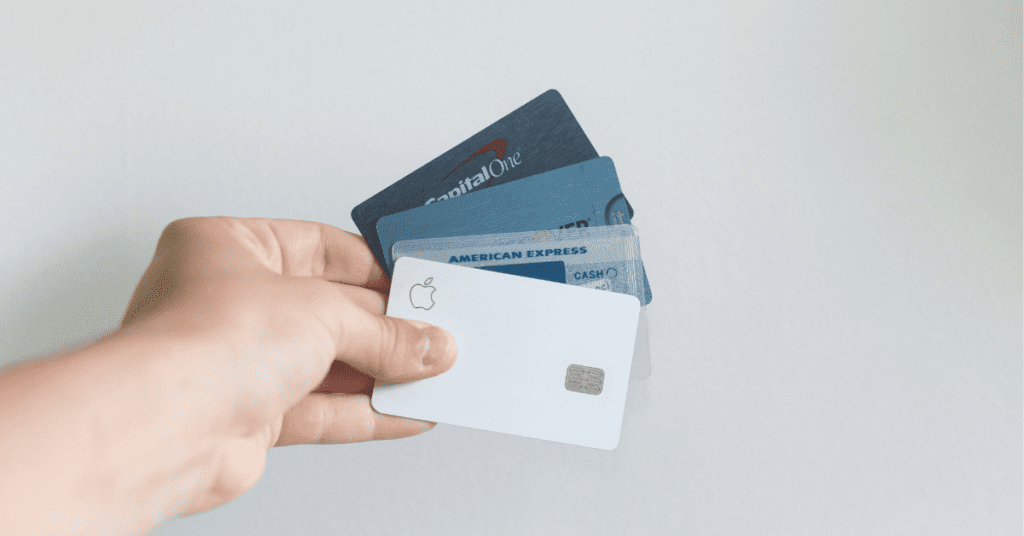

How to Budget, Save, and Build Financial Security
Financial success isn’t about how much money you make—it’s about how well you manage and save it. Many people struggle with money, living paycheck to paycheck, simply because they don’t have a solid financial plan in place.
If you want to build wealth, achieve financial freedom, and secure a stable future, you need to master the art of saving and budgeting.
This in-depth guide will walk you through effective strategies to cut unnecessary expenses, grow your savings, and create a financial plan that works for you.
Whether you are just starting or looking to refine your approach, these insights will help you take control of your money and achieve long-term stability.
The Key Benefits of Budgeting and Saving
- Improved Financial Control – A structured budget helps you track where your money goes, ensuring that your expenses align with your goals.
- Reduced Stress and Anxiety – Knowing that you have money set aside for emergencies and future expenses provides peace of mind.
- Avoidance of Unnecessary Debt – A strong savings habit reduces the need to rely on loans and credit cards for unexpected expenses.
- Opportunity to Invest and Build Wealth – Saving allows you to invest in assets that generate passive income and long-term financial security.
- Ability to Achieve Financial Goals Faster – Whether it’s buying a home, starting a business, or traveling, disciplined saving accelerates goal achievement.
Without a proper saving plan, people often fall into the trap of living beyond their means, which can lead to financial stress and long-term instability.
Why Smart Saving and Budgeting Matter
Many people mistakenly believe that financial stability comes from earning a high income. However, even high earners can struggle financially if they do not have a proper saving and budgeting system.
Smart saving and budgeting are the foundation of financial stability, helping you manage money effectively and achieve long-term goals. Without a clear financial plan, overspending and debt accumulation can become serious issues.
A well-structured budget ensures that essential expenses are covered while allowing room for savings and investments.
Smart saving habits, such as automating contributions and cutting unnecessary costs, help build an emergency fund and prepare for unexpected expenses.
Budgeting also reduces financial stress by providing clarity on spending patterns and preventing impulse purchases.
By tracking income and expenses, you can identify opportunities to optimize spending and redirect funds toward wealth-building.
Effective budgeting enables you to pay off debt faster, avoid financial pitfalls, and create a secure future. Smart saving supports retirement planning, homeownership, and other major financial milestones. Developing strong money management skills ensures long-term financial independence.
Regularly reviewing and adjusting your budget keeps it aligned with changing financial needs. With disciplined saving and budgeting, you can achieve financial freedom and a worry-free future.
The Importance of Saving Money
- Financial Security – Savings act as a safety net during emergencies, job loss, or unexpected expenses.
- Debt Prevention – A good saving strategy reduces dependence on credit cards and loans.
- Wealth Accumulation – Savings allow you to invest in wealth-building opportunities.
- Peace of Mind – Knowing you have financial reserves reduces stress and anxiety.
- Early Retirement Possibilities – Smart saving habits can help you achieve financial independence and retire earlier.
Without a structured savings plan, people often find themselves in financial distress, unable to cover basic expenses or achieve their long-term goals.
Step 1: Establish Clear and Achievable Savings Goals
Before you can start saving effectively, you need to have a clear understanding of why you are saving. Setting specific financial goals gives you motivation and direction.
Establishing clear and achievable savings goals is crucial for financial stability. Without specific targets, saving money can feel aimless, leading to unnecessary spending.
Start by defining short- and long-term goals, such as building an emergency fund or saving for a home. Assign a realistic amount and timeframe to each goal, breaking them into manageable milestones.
Prioritize based on urgency, ensuring essential expenses are covered before discretionary savings. Automate transfers to a dedicated savings account to maintain consistency. Tracking progress with budgeting apps or spreadsheets can boost motivation and accountability.
Adjust goals as needed while staying committed to long-term financial security. Avoid unrealistic targets that may cause frustration and discouragement. Celebrate small milestones to stay motivated and reinforce good habits.
Even small, consistent contributions add up over time, strengthening financial discipline. A structured savings plan lays the foundation for future financial success.
Types of Financial Savings Goals
- Emergency Fund – A financial cushion that covers at least three to six months of essential living expenses.
- Retirement Savings – Investing in long-term accounts such as 401(k), IRA, or other pension plans to ensure financial stability after retirement.
- Homeownership Fund – Saving for a down payment and home-related costs.
- Education and Skill Development – Setting money aside for professional courses, certifications, or higher education.
- Vacation and Lifestyle Goals – Planning ahead for discretionary expenses such as travel, hobbies, and entertainment.
How to Set SMART Savings Goals
- Specific – Define a clear objective (e.g., save $10,000 for a home down payment in three years).
- Measurable – Track progress using budgeting apps or spreadsheets.
- Achievable – Ensure your goals align with your income and expenses.
- Relevant – Focus on savings goals that align with your financial priorities.
- Time-Bound – Set deadlines for each goal to stay accountable.
Setting well-defined financial goals makes it easier to stay disciplined and track progress over time.
Step 2: Build a Realistic and Sustainable Budget
A budget is your financial roadmap, ensuring that your income is allocated wisely. Without a structured budget, overspending is easy, leading to financial instability.
Building a realistic and sustainable budget is key to effective money management and long-term financial stability. Start by calculating your total monthly income from all sources, including salary and side earnings.
List all fixed expenses like rent, utilities, and loan payments, followed by variable costs such as groceries and entertainment. Categorizing expenses helps identify areas to cut unnecessary spending and boost savings.
Use budgeting strategies like the 50/30/20 rule to balance necessities, discretionary spending, and savings. Leverage budgeting apps or spreadsheets to track expenses and stay accountable. Automate bill payments and savings contributions to ensure consistency.
Regularly review and adjust your budget to accommodate financial changes. Setting realistic goals prevents overspending and promotes financial discipline. Prioritizing debt repayment, especially high-interest debt, frees up future funds for investments.
A well-structured budget provides financial security and reduces stress. Maintaining a budget lays a strong foundation for wealth-building success.
Best Budgeting Methods for Smart Financial Management
- 50/30/20 Rule – Allocate 50% of income to necessities, 30% to discretionary spending, and 20% to savings and debt repayment.
- Zero-Based Budgeting – Assign every dollar a purpose, ensuring no untracked expenses.
- Envelope System – Use cash or digital envelopes to categorize and control spending.
- Reverse Budgeting – Prioritize savings first, then manage expenses accordingly.
- Value-Based Budgeting – Spend money on things that align with your long-term priorities while cutting unnecessary expenses.
Practical Tips to Make Your Budget Work
- Budgeting tools like Mint, YNAB, or GoodBudget can be used to automate financial tracking.
- Identify fixed and variable expenses to understand your spending habits.
- Adjust your budget quarterly based on income changes or unexpected costs.
Having a flexible yet structured budget ensures that you are always in control of your finances.
Step 3: Build an Emergency Fund for Financial Security
Life is unpredictable, and having an emergency fund can prevent financial crises. Unexpected medical expenses, job loss, or car repairs can disrupt your financial stability if you’re unprepared.
Building an emergency fund is a crucial step toward financial security and stability. An emergency fund acts as a financial safety net, helping you cover unexpected expenses such as medical bills, car repairs, or job loss without resorting to debt. Start by setting a realistic savings goal—aim for at least three to six months’ worth of living expenses.
Open a separate high-yield savings account to keep your emergency fund accessible but separate from daily spending. Contribute to your fund consistently by setting up automatic transfers from your paycheck or main account. Even small, regular contributions add up over time, strengthening your financial resilience.
Cut unnecessary expenses and redirect those savings toward your emergency fund to build it faster. Avoid using this money for non-urgent expenses to ensure it remains available when needed.
If you need to dip into your emergency fund, make it a priority to replenish it as soon as possible. Consider additional income streams, such as freelancing or part-time work, to boost your savings. Regularly review your fund to ensure it aligns with changes in living costs and financial needs.
A well-funded emergency savings account provides peace of mind, reduces financial stress, and prevents reliance on credit cards or loans during crises.
Why an Emergency Fund is Essential
- Covers Unplanned Expenses – Unexpected costs don’t derail your financial progress.
- Prevents Debt Reliance – Avoids the need to use credit cards or loans for emergencies.
- Provides Financial Peace of Mind – Knowing you have backup funds reduces anxiety.
How to Build an Emergency Fund Quickly
- Start with an initial goal of $1,000, then work towards saving three to six months’ worth of expenses.
- Store funds in a high-yield savings account for easy access and growth.
- Automate savings contributions to ensure consistency.
Step 4: Reduce Unnecessary Expenses and Optimize Spending
Many people struggle to save because they don’t track where their money goes. Cutting back on unnecessary expenses can free up money for more important financial goals.
Reducing unnecessary expenses and optimizing spending is essential for achieving financial stability and accelerating savings. Start by tracking your spending habits to identify areas where you can cut costs without compromising your quality of life.
Categorize your expenses into needs, wants, and luxuries to prioritize essential spending. Eliminate or reduce non-essential expenses like dining out, subscription services, and impulse purchases.
Use budgeting apps to monitor spending and set limits for discretionary expenses. Look for cost-effective alternatives, such as cooking at home instead of eating out or using public transportation instead of driving.
Take advantage of discounts, cashback offers, and loyalty programs to save money on everyday purchases. Negotiating bills, such as phone plans and insurance premiums, can also lower fixed costs. Avoid lifestyle inflation by maintaining a frugal mindset even as your income increases.
Set a spending cap on entertainment and shopping to prevent overspending. Redirect the money saved toward your emergency fund, investments, or debt repayment for better financial growth.
Regularly reviewing your budget ensures that your spending aligns with your financial goals. By making conscious spending decisions, you can achieve financial freedom and long-term security.
Common Expenses to Minimize
- Subscription Services – Cancel or downgrade unused subscriptions.
- Dining Out and Takeout – Cooking at home can save thousands per year.
- Luxury and Impulse Purchases – Avoid emotional spending.
- Energy Bills – Use smart devices and energy-efficient appliances.
Effective Ways to Reduce Spending
- Try a “no-spend challenge” for a month to reset spending habits.
- Use cashback apps and reward programs to save money on essential purchases.
- Plan grocery shopping in advance to avoid overspending.
Step 5: Automate Savings to Build Wealth Consistently
Automating your savings removes the temptation to spend money that should be set aside.
Automating savings is a smart way to build wealth consistently and achieve financial stability. Set up automatic transfers to a dedicated savings or investment account to make saving effortless.
Allocate a fixed percentage of your income, such as 20%, following the 50/30/20 rule. Use direct deposit or banking automation tools to transfer money immediately after receiving your paycheck. Prioritize essential goals like an emergency fund, retirement savings, or investment accounts.
Automate contributions to a high-yield savings account or retirement plans like a 401(k) or IRA. Set up recurring investments in index funds or ETFs to benefit from long-term market growth. Automating debt payments ensures timely repayments, reducing interest and improving credit scores.
Periodically review and adjust your automated savings to align with changing financial goals. Avoid relying on manual transfers, which often lead to inconsistent saving habits.
Small, steady contributions accumulate over time, fostering financial discipline. Automating savings removes temptation, keeps you on track, and steadily builds long-term wealth.
Benefits of Automated Savings
- Ensures Consistency – Savings happen regularly without effort.
- Eliminates Forgetfulness – No missed contributions.
- Takes Advantage of Compound Interest – Long-term savings growth.
How to Set Up Automated Savings
- Arrange direct deposit splits to allocate part of your paycheck to savings.
- Use round-up savings apps to invest small amounts.
- Automate retirement contributions through employer-sponsored plans.
By making saving a habit, you can steadily build financial security over time.
Step 6: Monitor Financial Progress and Adjust Strategies
Tracking your financial progress ensures that you stay on course with your savings goals.
Monitoring your financial progress and adjusting strategies is essential for long-term financial success. Regularly reviewing your income, expenses, and savings helps you stay on track toward your financial goals.
Use budgeting apps or spreadsheets to track spending patterns and identify areas for improvement. Set milestones to measure progress on goals like debt repayment, emergency savings, and investments.
If you’re falling behind, reassess your budget and make necessary adjustments, such as cutting unnecessary expenses or increasing savings contributions.
Stay flexible and adapt to changes in income, expenses, or financial priorities. Reviewing investment performance ensures alignment with long-term wealth-building objectives.
Automate reminders for financial check-ins, whether monthly or quarterly, to stay accountable. Celebrate small wins to stay motivated and reinforce good financial habits.
Consider seeking financial advice or learning new money management strategies to optimize results. Avoid complacency and continually refine your approach to improve financial stability.
By consistently monitoring and adjusting your strategies, you can achieve financial freedom and long-term success.
Key Metrics to Track
- Net Worth – The total value of assets minus liabilities.
- Savings Rate – The percentage of income saved each month.
- Investment Growth – How well your investments are performing.
How to Maintain Long-Term Financial Success
- Conduct quarterly financial reviews to assess progress.
- Adjust budgets based on income fluctuations or major life changes.
- Celebrate milestones to stay motivated.
Regular financial check-ins help refine your strategies for better results.
Conclusion: Take Charge of Your Financial Future Today
Achieving financial stability and long-term wealth isn’t about earning more—it’s about managing your money wisely. By setting clear financial goals, creating a structured budget, cutting unnecessary expenses, and automating your savings, you can build a secure financial future.
Remember, financial success is a journey, not a one-time event. Consistency and discipline are key. Start small, track your progress, and make adjustments as needed. The earlier you adopt smart saving habits, the sooner you’ll experience financial freedom and peace of mind.
Take control of your finances today—your future self will thank you!


Hasnain Aslam is a seasoned finance blogger and digital marketing strategist with a strong expertise in SEO, content marketing, and business growth strategies. With years of experience helping entrepreneurs and businesses boost their online presence and maximize organic traffic, he specializes in crafting high-impact content that ranks on search engines and drives real results. His insights empower professionals to build sustainable digital success through strategic marketing and innovative SEO techniques.


